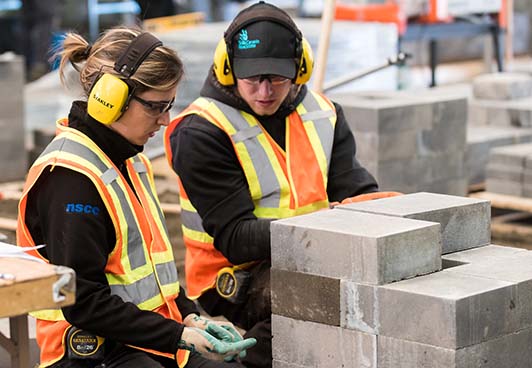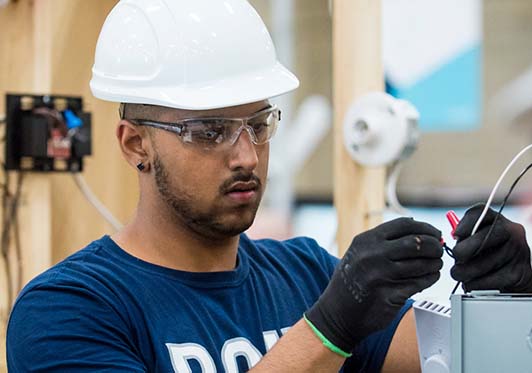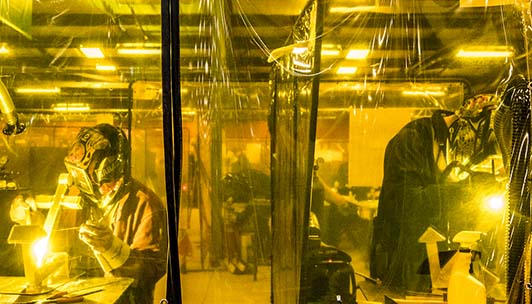Cabinetmaking
What is cabinetmaking?
Cabinetmaking involves more than simply designing, building, and repairing cabinets. It encompasses working with a variety of structures such as doors, windows and window frames, and all types of furniture. Cabinetmakers use many types of materials in this work, including veneer, fiberboard, particle board, hardboard, plywood, adhesives, abrasives, hardware and metal fastenings. They must follow blueprints and designer specifications exactly to construct and repair these wooden articles. Accuracy is imperative as they regularly need to fit small parts and sub-assemblies together, to precisely make and install cupboards and cases and to operate woodworking machines to cut and form parts. Today sophisticated equipment, basic woodworking machines, and portable power and hand tools are used to perform many of the job functions.
Cabinetmakers must have a broad knowledge of wood, its structures and properties, and an assortment of cabinetry hardware and materials. A worker with training and education could start in production and work their way up to a supervisory or management position in the wood industry, as the skills are transferable to a number of other professions.
Cabinetmakers perform some or all of the following duties:
- Study plans, specifications or drawings of articles to be made, or prepare specifications
- Mark outlines or dimensions of parts on wood
- Operate woodworking machines, such as power saws, jointers, mortisers and shapers, and use hand tools to cut, shape and form parts and components
- Trim joints and fit parts and subassemblies together to form complete unit using glue and clamps and reinforce joints using nails, screws or other fasteners
- Sand wooden surfaces and apply veneer, stain or polish to finished products
- Repair or restyle wooden furniture, fixtures and related products
- May estimate amount, type and cost of materials required.
HOW TO JOIN THE FIELD
Completion of secondary school is usually required.
Completion of a four-year apprenticeship program or A combination of over four years of work experience in the trade and some high school or college courses in cabinetmaking is usually required to be eligible for trade certification.
Trade certification is available, but voluntary, in all provinces and territories.
Red Seal endorsement is also available to qualified cabinetmakers upon successful completion of the interprovincial Red Seal examination.
INDIGENOUS AND REMOTE CONSIDERATIONS
Indigenous and remote communities may lack resources that allow for young people to get a head start in this trade. However, with the traditional skills of building houses and working with tools, it may be an appealing career choice. In small, fly-in communities, there may be only one or two companies to work for while staying in their home community. This may mean someone pursuing this trade will be looking at relocation or travelling to nearby communities to work on builds.
With math literacy in the north being lower than in other places, northern and remote students may need extra support in order to pass tests and get their red seal.
DISABILITY CONSIDERATIONS
With this job being heavy manual labour, it may not be possible for someone with a severe physical disability. Accommodations may be necessary for someone with a learning disability.
Find the right career path for you with our interactive map!
Trouvez le cheminement de carrière qui vous convient grâce à notre carte interactive!
Sample Job Titles
- Bench Carpenter
- Furniture maker
- Woodworking Machine Operator
- Cabinetmaker
- Cabinetmaker apprentice
- Custom wood furniture maker
Companies and Sectors
- Bench Carpenter
- Furniture maker
- Woodworking Machine Operator
- Cabinetmaker
- Cabinetmaker apprentice
- Custom wood furniture maker

Cabinetmaking and the Skills for Success Program
The key Skills for Success for this career path are:
- Creativity & Innovation
- Numeracy
- Reading




